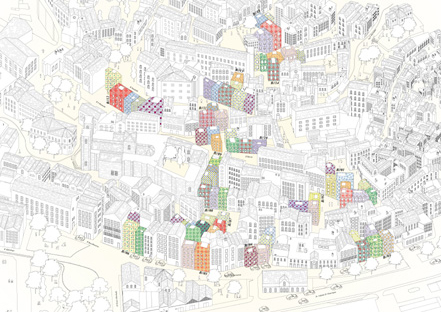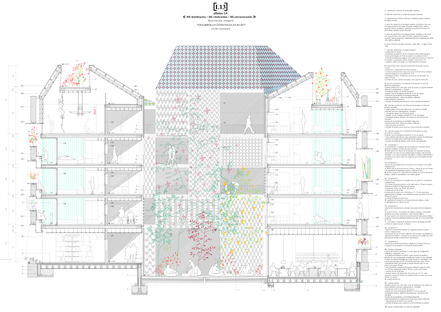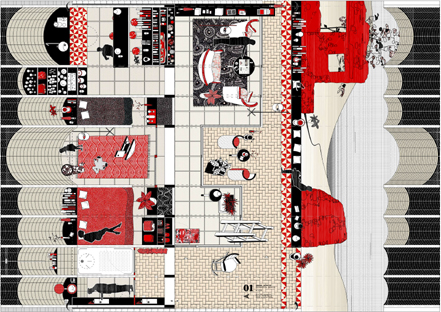In the architecture category, a renovated house in the old town of Lisbon was the winner. It should be noted that the two honorable mentions in the architecture category, as well as the other two finalist works in the category, are also single-family homes. In the interior design category, a restoration of a historic building in Betxí (Castellón) has won the first prize. Two honorable mentions have also been awarded: a magnificent restaurant in Barcelona and a grocery store.
In the PFC category, the “Alfama 2.0” project by María González Aranguren from ETSAM has been awarded the first prize.
The jury has been made up of the architects: Emilio Tuñón, Cino Zucchi, José Mª Sánchez, Martha Thorne, Anupama Kundoo, Fernando Márquez Cecilia and Ramón Monfort.
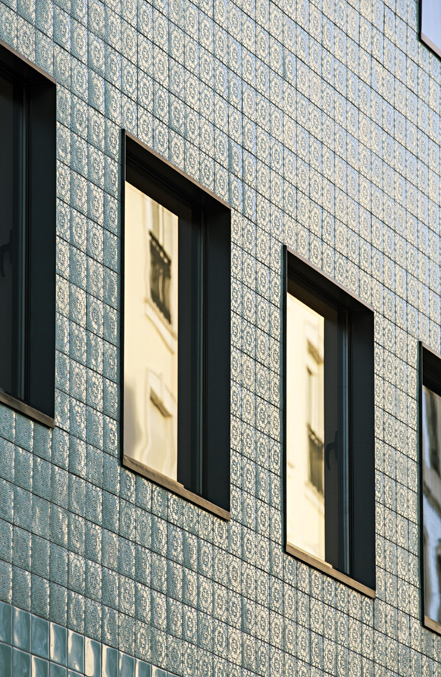
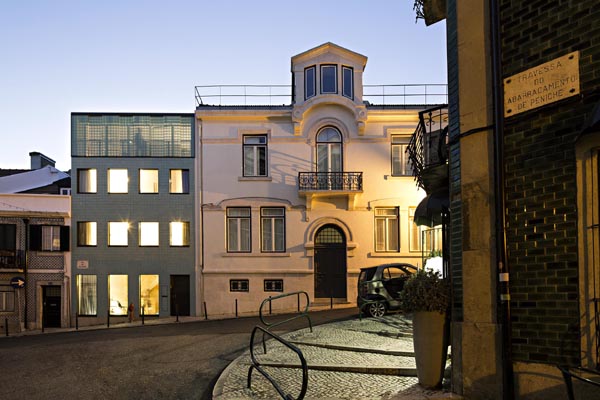
House in Príncipe Real by CAMARIM Arquitectos. Photograph © Nelson Garrido.
The jury decided to award the first prize in the Architecture category to the project “Casa en Príncipe Real” (Lisbon) by the CAMARIM Arquitectos studio (Vasco Correia and Patricia Sousa). The jury highlighted the project “the brilliant interpretation of the use of ceramics in the historic center of Lisbon. The house, developed on five floors, is presented to the street as a traditional ceramic plane reinterpreted with different textures.”
The cladding of the building is a contemporary approach to the tiles that covered the previous building, which was in an advanced state of decay. The architects defined a set of abstract standards to transform the original tile motif into an abstract pattern, personified in three different pieces: a flat tile base, a raised tile, and light-permeable perforated steel pieces.
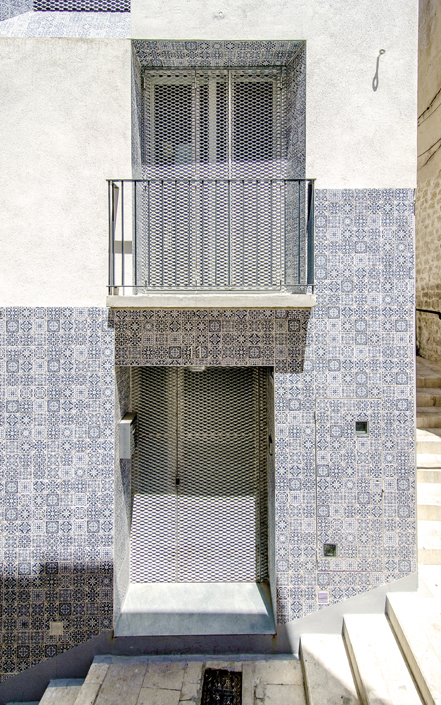
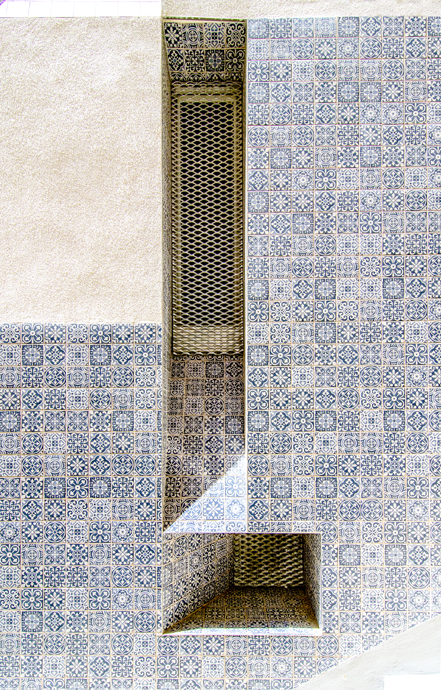
El Enroque House, by Ángel Luis Rocamora. Photography © M.A. Cabrera.
Honorable mentions ARCHITECTURE
- “Casa El Enroque”, by Ángel Luis Rocamora of which the jury values “the sensitive use of traditional ceramic elements used in the facades in combination with the openings of the holes, which are strategically opened in the rehabilitation and expansion of an existing building.”
The façade, and its openings, in its contact with the public space is protected by a tile plinth, which climbs onto the façade and enters its openings, jambing them, adapting with geometric perfection to the series of flared planes that make up its elevations. This tiled plinth and the formal image of the continuum of holes drilled into the solid façade, protected with lattices of stretched, permeable metal sheet, give it a mediating image between the tradition of the place and the decidedly contemporary vocation of the house.
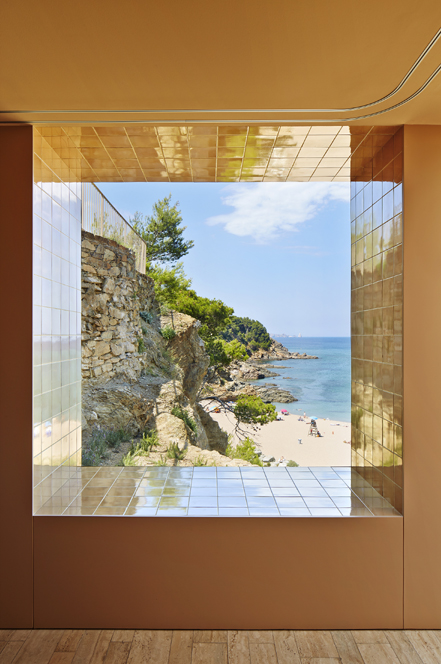
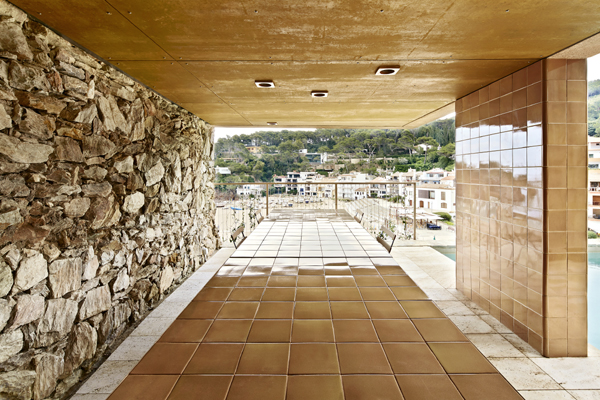
Andamio House by bosch.capdeferro architectures. Photography © José Hevia.
- “Casa Andamio”, by bosch.capdeferro architectures. The jury has highlighted the intelligent intervention on an existing house, as well as the use of glazed ceramic in different elements of the building as catalysts for a particular vibration of light in the transitional spaces between the interiors and exteriors.
The materials chosen, likewise, seek to establish a line of continuity with the construction tradition of the place. In this sense, ceramics play a fundamental role: the use of glazed pieces produced in the nearby town of La Bisbal is proposed, historically present in the constructions of this area of the coast and that define the character and image of its towns. The project proposes the use of common pieces and latticework as cladding and filter material in façade openings in their most common applications, but also as a basic material for the construction of furniture or as an element for integrating recessed luminaires both indoors. as on the outside of the house. The glazed finish of the ceramic and its irregularity, the result of its manual workmanship, provide a particular vibration of light, giving the space a solar warmth.
ARCHITECTURE Finalists
According to the jury, two other single-family homes deserved to be listed as finalists in the category:
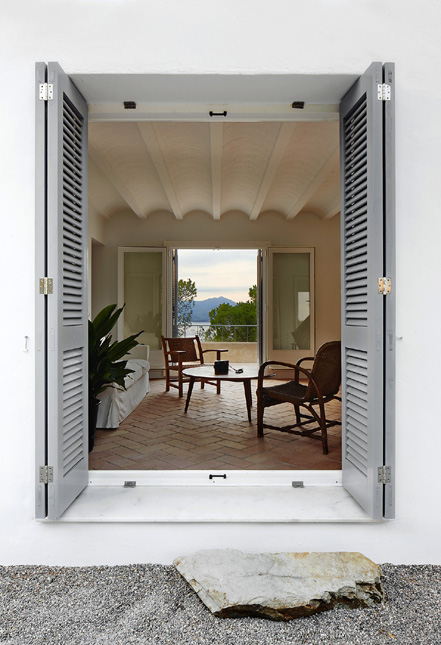
_House in Port de la Selva, by Emiliano López and Mónica Rivera (Photography by José Hevia).

_TR House in Barcelona, by PMMT Arquitectos (Photography by Pedro Pegenaute).
Awarded INTERIOR DESIGN
In the Interior Design category, the first prize is awarded to the project "Recovery of the cloister of the Palau-Castell de Betxí" from the El Manufacturer de Espheras studio. The jury values the conceptual transformation of the interior space of the cloister by incorporating a large mirror surface that "virtually builds" half of the lost Renaissance cloister. The work is committed to the recovery of the cloistered space with the incorporation of a traditional fired clay wall.
It has opted to use a single material as a tool for the recovery of the cloister, managing to finish the unfinished elements of the classic patio and enhance the ground floor.
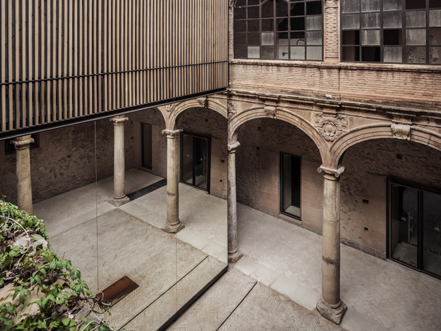
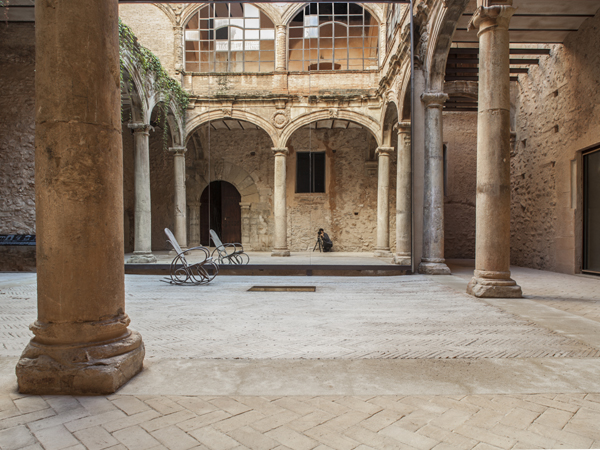
Recovery of the cloister of the Palau-Castell de Betxí, by the Manufacturer of Espheras. Photography Milena Villalba.
_ "Tienda Bodebó" by CAVAA (Jordi Calbetó i Oriol Vañó) in which the jury values “the freshness of the intervention in the interior renovation, as well as the humility, and the efficiency in the use of the different ceramic pieces”.
It is committed to the reuse of existing elements, as the best guarantee that the store will not lose its character. The ‘bevel tile’, present on the benches and walls of the original store, has been used again to develop the bulk display benches and the sales counter. This time with white paint on the enamel and exposed terracotta and with a drawing that breaks with the classical arrangement.
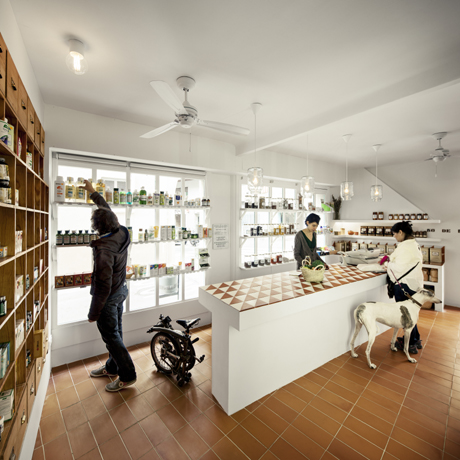
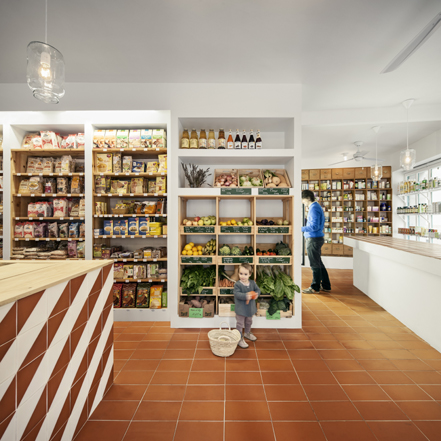
Bodebo de CAVAA Store. Photography © Jordi Surroca.
During Modernism, almost all architects used ceramics and ceramic mosaic, but none of them evolved and adapted the two arts in such a representative way as Domènech i Montaner. His work is unusual and unique, in order to be applied to each space, seeking function and beauty from specific designs and colors. This evolution towards ceramic wall tiles and their various applications is not only found inside their works, but also on the facades and roofs of their buildings. To highlight the great decorative and sculptural richness in ceramics of this Pavilion, four performance criteria were adopted: restoration, reintegration, reinterpretation, and relocation.
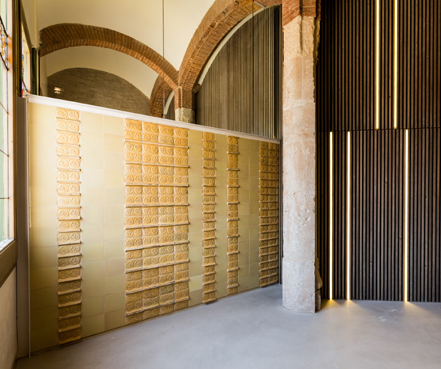
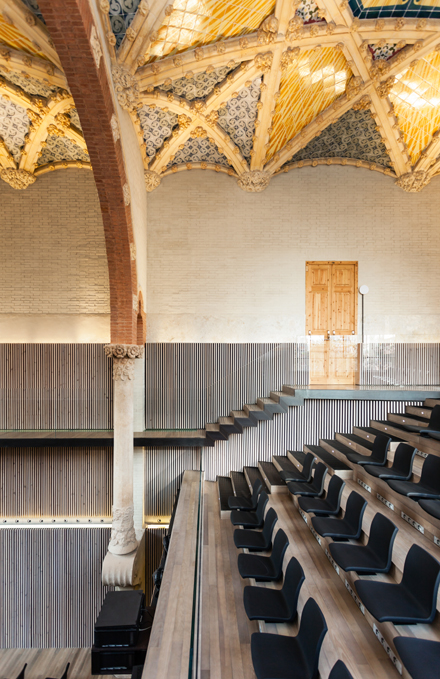
Restoration of the Administration Pavilion of the modernist Sant Pau site, by Joan Nogué. Photography © Marcela Grassi and Robert Ramos.
INTERIOR DESIGN Finalist
In the Interior Design category, Alejandro Londoño's TIC TAC TATTOO was finalist.

TIC TAC TATTOO was finalist (Photograph by Iker López).
PFC Awardees
Finally, the Ceramics Awards have a category designed to distinguish the best Final Degree Project carried out by School Architecture students in which the use of ceramics in the project plays an important role (access the PFC minutes).
The jury has agreed to award the First Prize in the PFC category to the “Alfama 2.0” project by María González Aranguren from ETSAM. The jury highly values the project for the rehabilitation of the Alfama neighborhood in Lisbon, due to the high quality of the proposal, both in urban and architectural terms. Likewise, the optimistic constructive interpretation of the traditional ceramic facades of Lisbon is valued.
